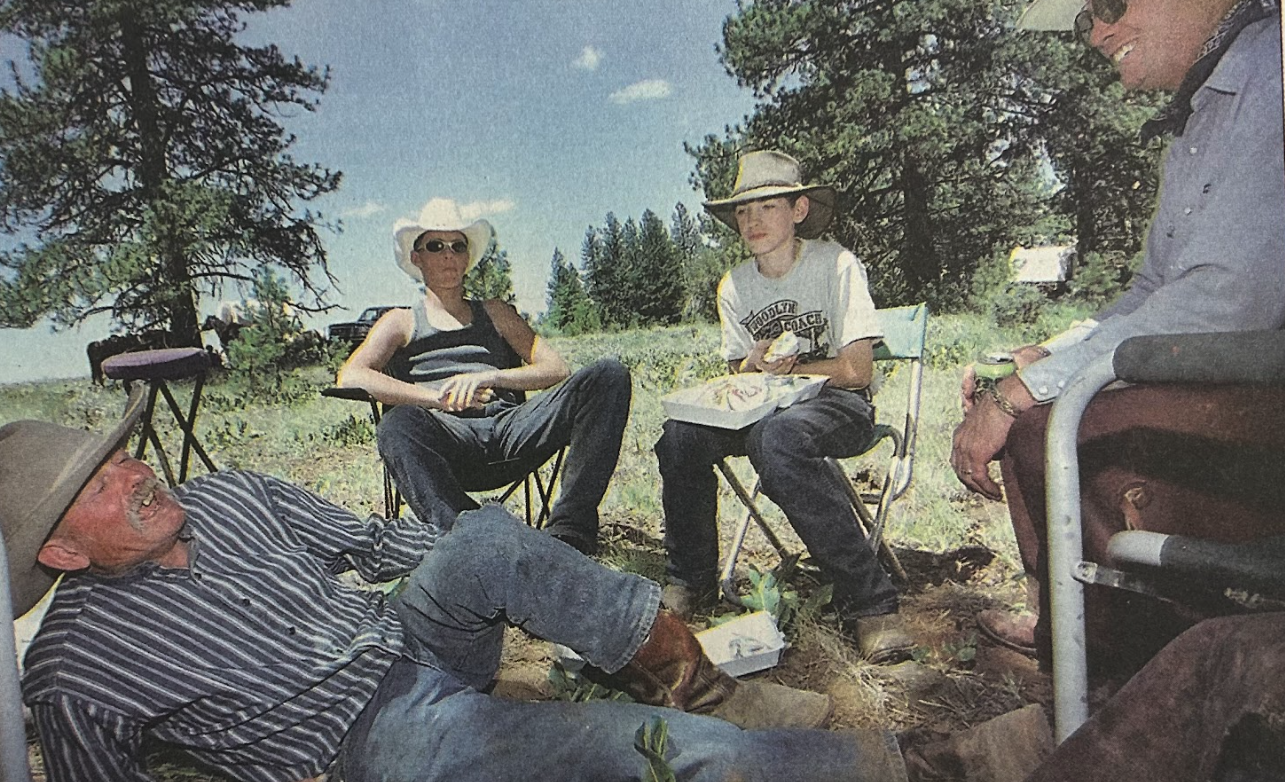High and dry
Published 6:36 am Monday, July 5, 2021

- Grant County watermaster Eric Julsrud checks streamflow levels on June 29, 2021.
JOHN DAY — Grant County is in the grip of a severe drought of historic proportions.
Gov. Kate Brown’s July 1 emergency drought declaration for Grant County comes amid the driest year the county has seen in more than a century.
It’s the driest it’s been in 127 years with 2 to 2.5 fewer inches of rain on average this year, according to the National Integrated Drought Information System.
The multi-agency drought monitoring system reports that over half of the county, roughly 65%, is currently under extreme drought conditions.
How bad are the drought conditions in Grant County?
Most of Grant County is in extreme drought — the second to worst category in the U.S. Drought Monitor system, behind only exceptional drought. In these regions, pastures are brown and barren, hay yields are low and prices are increasing, and ranchers are selling cattle to avoid have to buy expensive supplemental feed and pasture.
Local producer and biologist Shaun Robertson, who is president of the Grant County Farm Bureau, said every rancher he has talked to told him that this is the worst they’ve ever seen.
“Most are saying this is also the shortest water year that they can remember (including testimony from an 87-year old rancher from Fox),” he said.
Robertson said he could remember at least one year in recent memory, roughly 20 years ago, that began as bad as this year. However, Robertson told the Eagle the county was “bailed out” by late rain that year. He said he does not anticipate that happening in 2021.
Eric Julsrud, Grant County’s watermaster, said the worst year on record in his experience was 2001. He said this year may be worse.
According to the national drought system’s historical data, at the start of July of 2001, 100% Grant County was in severe drought, but never progressed to extreme drought that year.
The conditions this year are significantly impacting ag operations.
“I have lost two cuts of hay over the last two years on Cottonwood Creek in Monument,” said Farm Bureau member Gary Adams in comments supplied by Robertson. “I only get 30 days of water, so I get one cut (of hay) a year. So I have lost about 15 tons a year, a significant loss for a small farm.”
In another experience that Robertson shared with the Eagle, Micah Wilson, a Grant County ranch manager, said the drought’s impacts started in May 2020. Wilson said the pastures his cows had grazed early in the season never recovered.
Like other ranchers across the West, he said the ranch he manages would be buying about 500 additional tons of hay this year.
Kyle Sullivan, director of the Grant Soil and Water Conservation Districts, runs a ranch for his in-laws and his wife in Dayville. He said the scarcity of spring rain, coupled with low temperatures and steady winds, stunted grass growth.
How does the heat affect drought?
Robertson said the heat, which arrived with record-setting temperatures the last week of June, essentially sucks out whatever moisture is in the ground and the plant.
“We don’t get any (moisture) recovery at night, and plants cure much earlier,” he said.
The lack of moisture reduces available feed for everything: cattle, wildlife and watershed function, he said.
Julsrud added that the heat, coupled with the wind, increases evaporation, dries the ground out faster and slows water spread in irrigation ditches.
He likened the phenomenon to watering a house plant that has not been watered for a month. The water, Julsrud said, does not soak into the soil. Instead it spills onto the floor.
“The same principle applies to the soil in the world,” he said. “If they get so dry, and you try to spread water on it, it doesn’t soak in. It just sheets off.”
Early water regulations
To maintain critical thresholds for rivers and streams lakes to maintain fish survival, the state’s regulation of water allotment under water rights laws started earlier than usual, Julsrud said — likely by early July.
Oregon’s water laws are based on “prior appropriation.” Under Oregon law, the person whose water rights are oldest is the last to get water shut off when flows aren’t sufficient to supply water to all water rights holders.
Hailey Boethin, the county’s assistant watermaster, said the water district is roughly four to six weeks early in receiving calls for the watermaster’s office to start shutting off water to junior water rights.
She said when water users see the “writing on the wall,” they work “collaboratively” together to best utilize the limited resource.
Regional differences?
Boethin said the North Fork of the John Day River is typically a healthy system. Julsrud said this is because the river starts farther north than the other stems. The Middle Fork, Boethin noted, is the second best. Julsrud pointed out that the upper Prairie City country, including Reynolds Creek, does well in drier seasons as it starts up high in the hills where winter snowpacks are deeper.
Canyon and Dixie Creeks, he said, do not perform as well when low streamflows occur. Julsrud noted that southerly flowing tributaries around Prairie City are “generally pretty poor.”
Boethin pointed out that some of the south Prairie City tributaries can be healthy in the upper timber country but unhealthy closer to the valley floor. Julsrud said this could be due to fault lines, cracks in the bedrock and a host of other “crazy things.”
Robertson said he suspects some will have a harder time this year than others. Overall, he said, irrigators use very little of the total amount of water in the John Day system. Instead, he said they rely upon the system during the most critical time of the year when flows are the lowest.
Robertson said there are many proven techniques to extend the hydrograph when peak runoff occurs and when water is most critical for agriculture and aquatics. He said those improvements would dramatically improve flow conditions for both irrigators and fish but that Oregon appears unwilling to take those measures.
Increased wildfire risks?
Ron Simpson, Malheur National Forest fire and aviation staff officer, told the Eagle that a drought letter recently went out to ranchers who have permits to graze cattle on the forest. Simpson, who emphasized that he is not a range expert, said that the grazing system is spread thin without the spring rain that usually generates more abundant grass growth.
“Depending on how many cows per acre are out there, I think (the drought) is just going to put stress on the system as a whole,” he said.
Simpson said the drought conditions had put the fire season ahead of schedule by about a month.
Without the spring rain, larger fuels that typically retain more moisture and are less likely to burn are drying out more quickly, leading to the potential for larger, more robust fires in the forest, Simpson said.
“That increases intensities and the burn intensity of the fire itself,” he said.
What is a drought?
There is no specific definition of a drought. The consensus is that it is a period of dry weather that occurs long enough to impact water supplies, farming, livestock operations, energy production and other activities.
The U.S. Department of the Interior points out that drought has different meanings depending on a person’s perspective.
For a farmer, a drought is a period of low precipitation that affects the crops. For example, a two-week dry spell can stress many crops during specific growing periods.
On the other hand, a meteorologist would define drought as a prolonged period when precipitation is less than average.
From a water manager’s perspective, Eric Julsrud, Grant County’s watermaster, said that drought is when the region’s water supply is deficient and impacts water availability.
The U.S. Drought Monitor system, a five-category system, begins at abnormally dry conditions, a precursor to drought conditions, moving upwards to moderate (D1), severe (D2), extreme (D3) and then exceptional (D4) drought conditions.
According to the NIDS website, the categories show experts’ assessments of conditions related to dryness and drought. The analysis includes their observations of how much water is available in streams, lakes and soils in a specific region compared to the average for the same time of year.
Under extreme drought conditions, reservoirs and lakes are shallow compared to an average year in normal conditions. Additionally, wildfire risk is high, and there is an inadequate level of plant growth.






